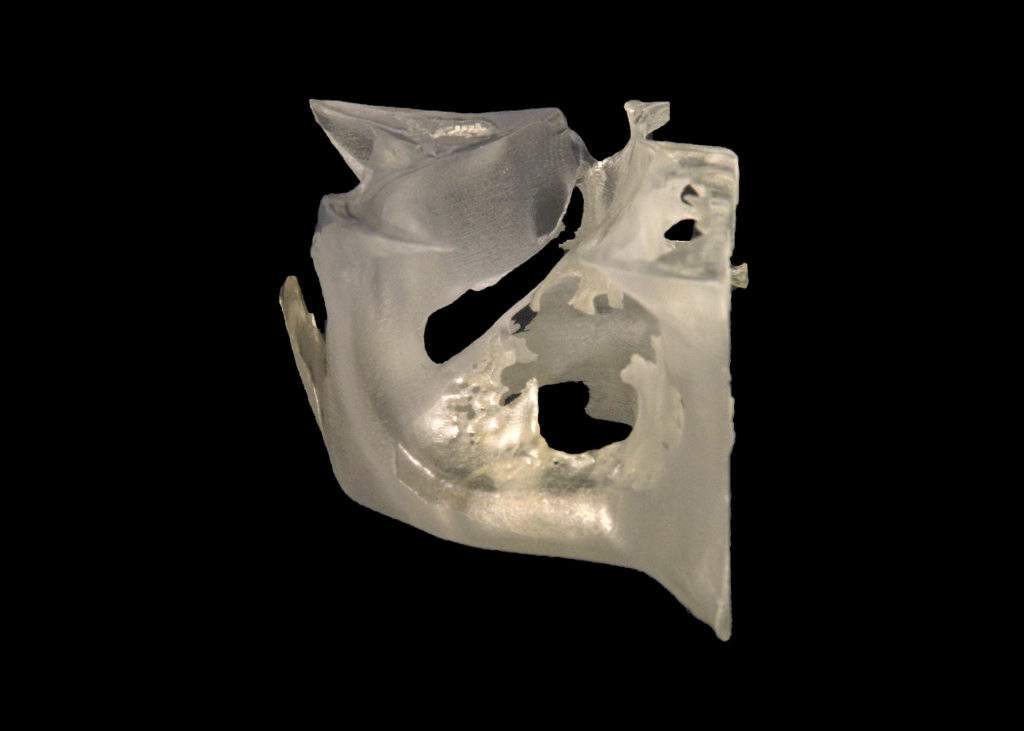The University Hospital Basel in Switzerland saves up to 30% time during complex cranio-maxillofacial surgeries by exploiting 3D printed surgical guides. The hospital affirms that they save up to 2,000 Swiss Francs (1710 €) per surgery.
3D printed surgical guides
3D printed surgical guides have been implemented by a great number of 3D printing companies in order to improve medical operations. Materialise for instance, provides a 3D printed guide for shoulder surgery. Just like Stratasys today, 3D Systems and Stryker distribute VSP® (Virtual Surgical Planning) and anatomical models for the craniomaxillofacial specialty.
Back on our story… The hospital installed a Stratasys 3D printer in the Department of Cranio- and Maxillofacial Surgery in order to improve its surgical planning processes.
“Many of our trauma patients arrive with complex, life-threatening injuries that necessitate the creation of quick and efficient treatment plans,” explains Dr. Florian Thieringer, hence the need to have a 3D printer in house.
Dr. Thieringer explains that, with orbital floor and zygomaticomaxillary complex fractures, the visibility is restricted due to the limited access during operation, and the risks of error can be high. Previously, the team would need to plan reconstructions using standard titanium meshes. These meshes needed to be cut and formed by hand in the operating theatre to ensure an exact fit. This often resulted in an increased operating theatre time and cost and could negatively impact the patient.
That’s why, they used Stratasys 3D printing technology to fabricate a patient-specific model prior to the operation, all within two hours of receiving a patient’s CT scan.
“With the highly-accurate 3D printed models, standard titanium implants can be shaped individually to create a hybrid patient-specific implant,” says Dr. Thieringer. “This reduces any cutting and suture time needed during the operation and also reduces the need to source patient-specific titanium implants from external suppliers. Also, thanks to the transparency of MED610 modelling material, we can create highly precise, anatomically correct models. This not only allows us to visualize parts of the anatomy otherwise obscured or limited during surgery, but it also reduces the need for patients to return for revision operations.”
For further information, follow us on our social media and subscribe to our newsletter!
Would you like to be featured in the next issue of our digital magazine? Send us an email at contact@3dadept.com







